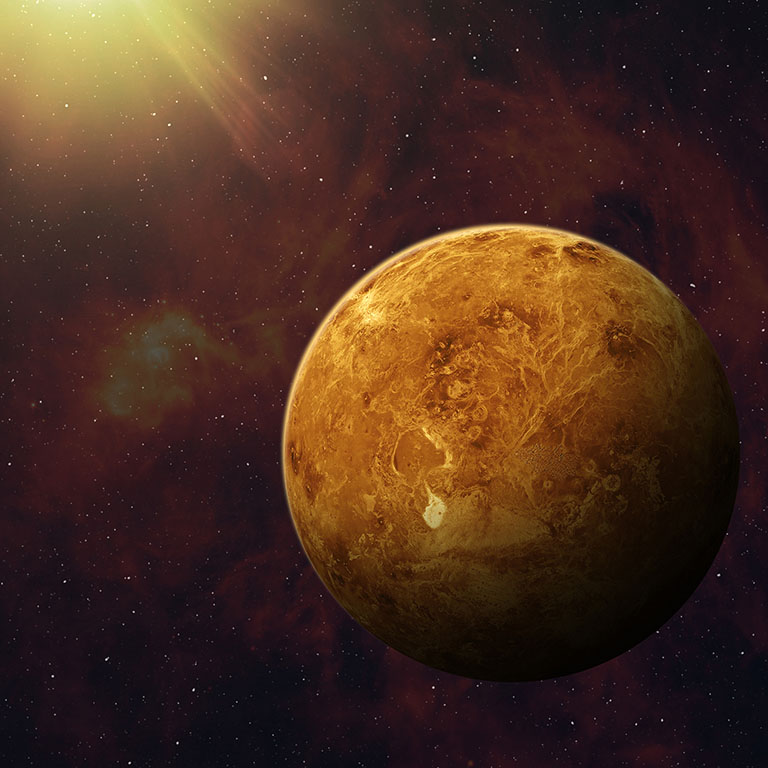January’s planet lineup continues into February, and perhaps the weather will be a tad warmer than the cold evenings we had in January. Take advantage of warmer weather to enjoy the planetary parade in the evening sky.
Look for Venus and Saturn in the southwestern sky after sunset. Venus will be very bright, and will reach its highest altitude above the horizon on February 2nd. Fainter, yellowish Saturn will be between Venus and the horizon. After February 2nd, Venus will begin to move westward, and will be a bit lower in the sky each night. Venus will continue to brighten as it moves closer to Earth, reaching its brightest on Feb. 16. After that, Venus will fade a bit as our view will be of its dark side.
Saturn’s rings will also be fading from view through the month and into March. Our view of the rings will be close to edge-on, so they will seem to disappear. But don’t worry – the rings will come back into view later in the spring.
Neptune will be southeast of Venus on Feb. 3rd but too dim to see with the naked eye – Neptune is so far out in the Solar System that a telescope is needed to see it.
Mars and Jupiter will be visible in the southeastern sky, with bright Jupiter leading redder Mars. Uranus will be west of Jupiter in the sky, visible with binoculars.
On February 5th, the Moon will pass by the Pleiades and Jupiter in the evening sky, and move on to pass by Mars on February 9th. Full moon will occur on Feb. 12th.
By February 18th Mercury will emerge from behind the Sun, but will be close to the western horizon and lost in the bright sunset. But by Feb. 24th and 25th, look for Mercury low above the western horizon following the line down from Venus and Saturn. Be sure you have a clear view of the western horizon, though – Mercury will be very low in the sky.
After new moon on Feb. 27, the moon will pass in front of Mercury on Feb. 28.


 The College of Arts
The College of Arts